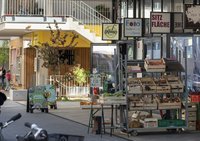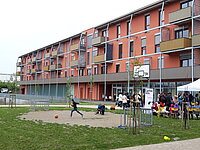Key Topics of the IBA_Vienna
The aim of the IBA_Vienna is to stimulate and support smart new developments for the future of social housing and their practical implementation. Affordability, secure housing conditions and modern standards for a dignified living environment have at all times shaped these developments.
In addition, many questions arise about how to respond to global developments and their effects on us, for example: How do we deal with changing work conditions? How can disadvantaged people be effectively supported? How can a high standard of quality be guaranteed when prices for land and construction are rising and people are under pressure? How do cities contribute to protecting our living environment?And how do we adapt to the already noticeable effects of climate change? How can living together be designed and organized in a sustainable way?
Based on these questions and the guiding themes from the memorandum to the IBA_Vienna the following six key topics have been developed.
Neighborhood Development
Neighborhoods – in Viennese called: Grätzel – form the framework for social interaction in a city. They are the place where neighborship is lived, in public as well as in private spaces. Developing a neighborhood is therefore a task that is as beautiful as it is demanding.

Process Development
The processes in the ground of neighborhood development may seem abstract because they are difficult to represent in pictures. But the rules according to which they function and, above all, the question of who is allowed to participate in them can be clearly read in the built result.

Mixed Use
For neighborhoods to truly become a piece of the livable and viable city, a proper mix is needed. A small-scale mix of living, working and shopping facilities ensures short distances, avoids traffic and emissions. Culture, gastronomy and social offerings are essential for the identity of a neighborhood.
Climate Adaption & Environmental Sustainability
The effects of climate change have not only been researched for a long time, they are also becoming increasingly noticeable for all of us, with the number of heat days in summer increasing. Densely built-up urban areas in particular cool down noticeably less at night.
Affordability & New Forms of Housing
The right to housing is a human right. However, the growth of cities and, above all, the discovery of housing as a capital investment by the financial markets (“concrete gold”) have turned housing into a product that is becoming increasingly expensive.
Stock Development
The days when urban development was thought of only as a tabula rasa are long gone. Cities are evolved organisms that can be accommodated not by radical cuts but by continued building in the best sense of the word.



